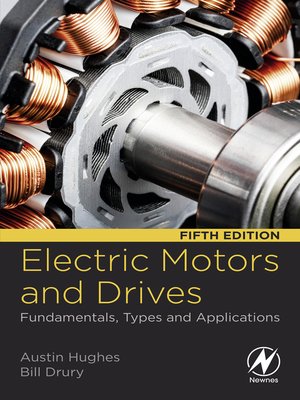
Sign up to save your library
With an OverDrive account, you can save your favorite libraries for at-a-glance information about availability. Find out more about OverDrive accounts.
Find this title in Libby, the library reading app by OverDrive.



Search for a digital library with this title
Title found at these libraries:
| Library Name | Distance |
|---|---|
| Loading... |
Electric Motors and Drives: Fundamentals, Types and Applications, Fifth Edition is intended primarily for non-specialist users or students of electric motors and drives, but many researchers and specialist industrialists have also acknowledged its value in providing a clear understanding of the fundamentals. It bridges the gap between specialist textbooks (too analytical for the average user) and handbooks (full of detail but with little insight) providing an understanding of how each motor and drive system works.
The fifth edition has been completely revised, updated and expanded. All of the most important types of motor and drive are covered, including d.c., induction, synchronous (including synchronous reluctance and salient Permanent Magnet), switched reluctance, and stepping. There has been significant innovation in this area since the fourth edition, particularly in the automotive, aircraft and industrial sectors, with novel motor topologies emerging, including hybrid designs that combine permanent magnet and reluctance effects. We now include a physical basis for understanding and quantifying torque production in these machines, and this leads to simple pictures that illuminate the control conditions required to optimise torque. The key converter topologies have been brought together, and the treatment of inverter switching strategies expanded.
A new chapter is devoted to the treatment of Field Oriented control, reflecting its increasing importance for all a.c. motor drives. A unique physically-based approach is adopted which builds naturally on the understanding of motor behaviour developed earlier in the book: the largely non-mathematical treatment dispels much of the mystique surrounding what is often regarded as a difficult topic. - Helps users acquire knowledge and understanding of the capabilities and limitations of motors and drives without struggling through unnecessary math and theory
- Presents updated material on the latest and most widely-used motors and drives, including brushless servo motors
- Includes additional diagrams and worked examples throughout this updated edition
- Includes a physical basis for the understanding and quantifying torque production







